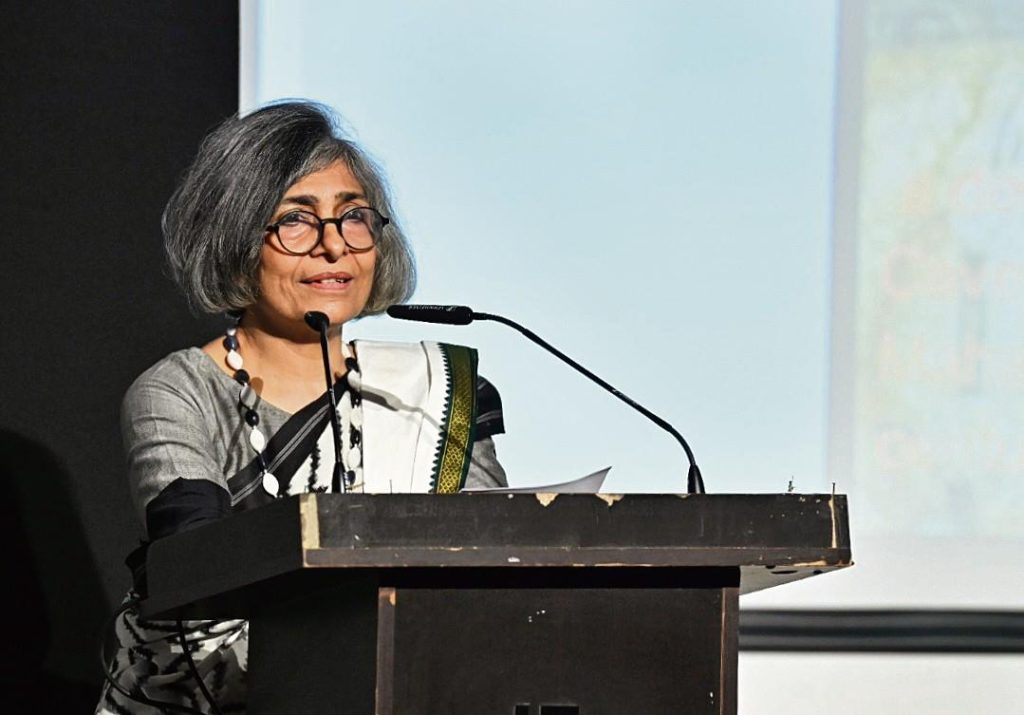Introduction
In a thought-provoking lecture at the Indira Gandhi National Centre for the Arts, Parul Dave Mukherji, a faculty member at the School of Arts and Aesthetics at Jawaharlal Nehru University (JNU), delved into the intricate realms of Indian art history. She shed light on the profound significance of mimesis, the representation of the real world or naturalism, and the imperative need for Decolonisation within the discipline.
An Overlooked Gem: Ajanta Caves and the Mouth Depiction
Mukherji commenced her discourse by unveiling a captivating example from the Ajanta Caves, a UNESCO World Heritage site renowned for its ancient Buddhist paintings. She directed the audience’s attention to an oft-overlooked painting from the 5th century CE, which depicted the mouth and teeth in intricate detail. This seemingly minor detail served as a powerful symbol for Mukherji, signifying the blindness that has permeated the field of art history, necessitating urgent Decolonisation efforts.
Decolonisation in Focus
While the term ” Decolonisation” has become ubiquitous in academic discourse, Mukherji urged for a more precise understanding of its implications. She cautioned against assuming that all European disciplines originated from ancient India or that Indian art history can be traced back exclusively to Vedic science. Instead, she emphasised the need for a nuanced and context-specific approach to Decolonisation.
Unearthing Western Origins
Mukherji’s exploration of Decolonisation in art history led her to delve into its Western origins and its introduction to India during the colonial period. She underscored the intricate connection between the evolution of Indian art history and the colonial era. Understanding this historical context is pivotal in dismantling the colonial legacies that continue to influence the field.
Anukarana Vada: Performative Mimesis
Central to Mukherji’s discussion was the concept of Anukarana Vada, or performative mimesis, drawn from the Silpasastras, ancient Indian texts on art and aesthetics. While the term “mimesis” lacks a direct translation, Mukherji highlighted the resonance of terms like “satya” (truthful), “sadrsya” (similar), and “pratibimba” (reflection) with the essence of mimesis. This perspective challenges the notion that naturalism is exclusively a domain of the West, asserting that each culture possesses a unique mode of representing the world.
Stella Kramrisch’s Perspective
Mukherji invoked the insights of Stella Kramrisch, an Austria-born art historian, who made significant contributions to the understanding of Indian naturalism. Kramrisch’s work emphasised that different cultures have distinct approaches to representing the world and that Indian art history is replete with its own rich traditions and narratives.
Parul Dave Mukherji’s lecture at the Indira Gandhi National Centre for the Arts served as a compelling call to action, urging scholars to reevaluate the lenses through which they view Indian art history. By exploring mimesis and embracing decolonisation, the discipline has the potential to undergo a transformative shift, bringing to light the overlooked treasures of indigenous artistic expression.
Feature Image: Parul Dave Mukherji in New Delhi on Friday. Courtesy: TRIBUNE PHOTO

Contributor





